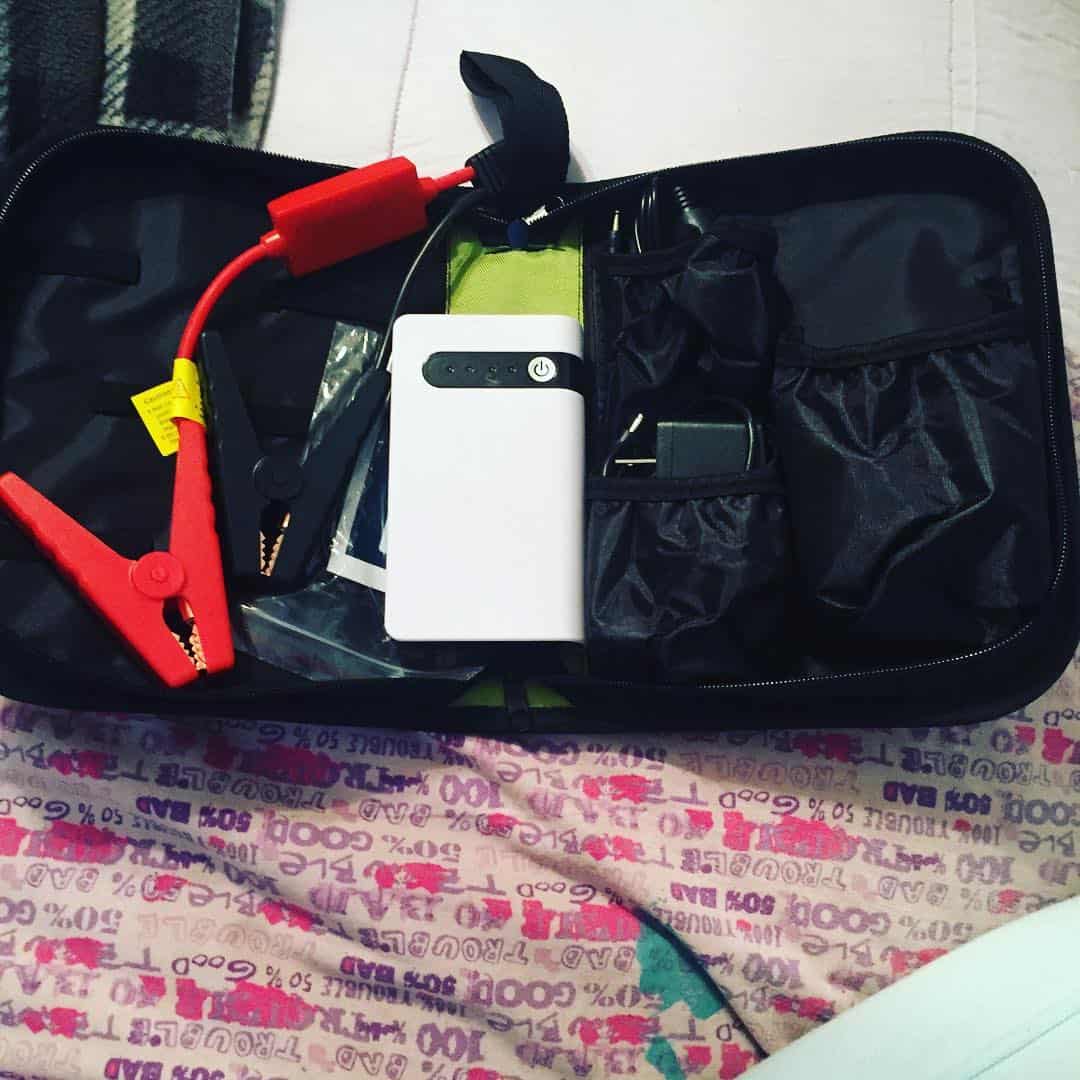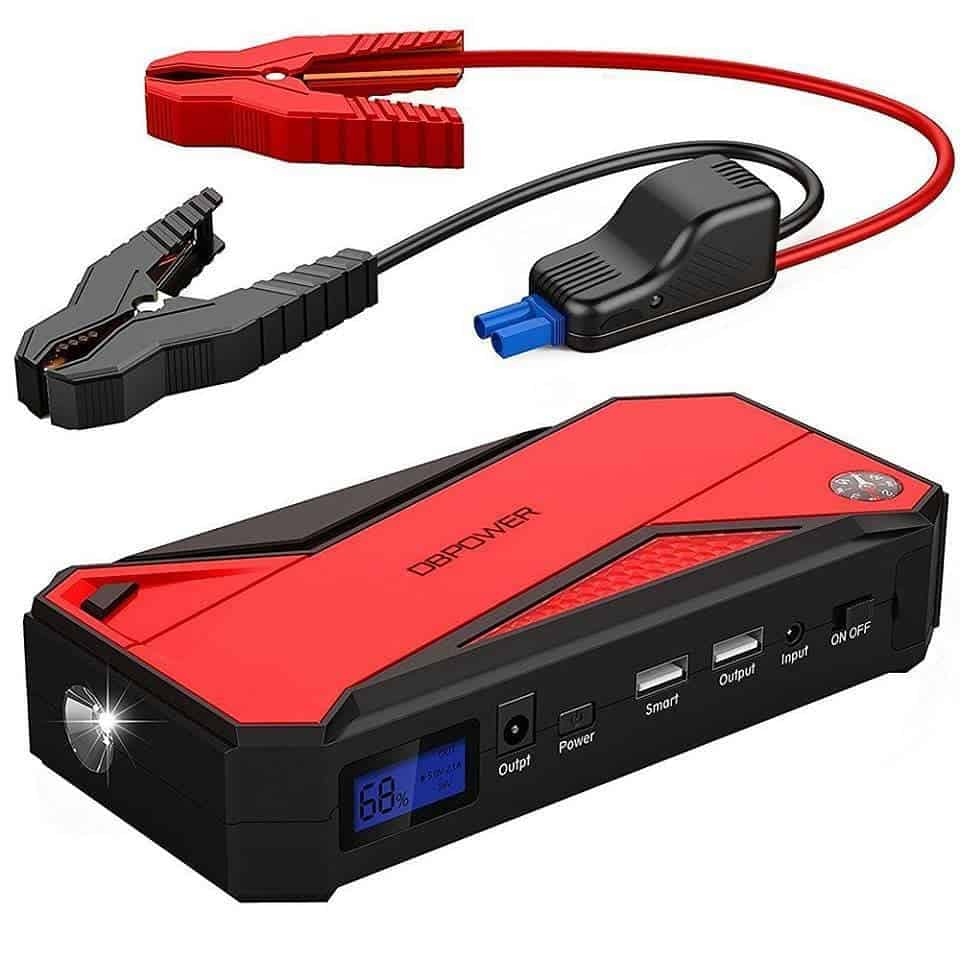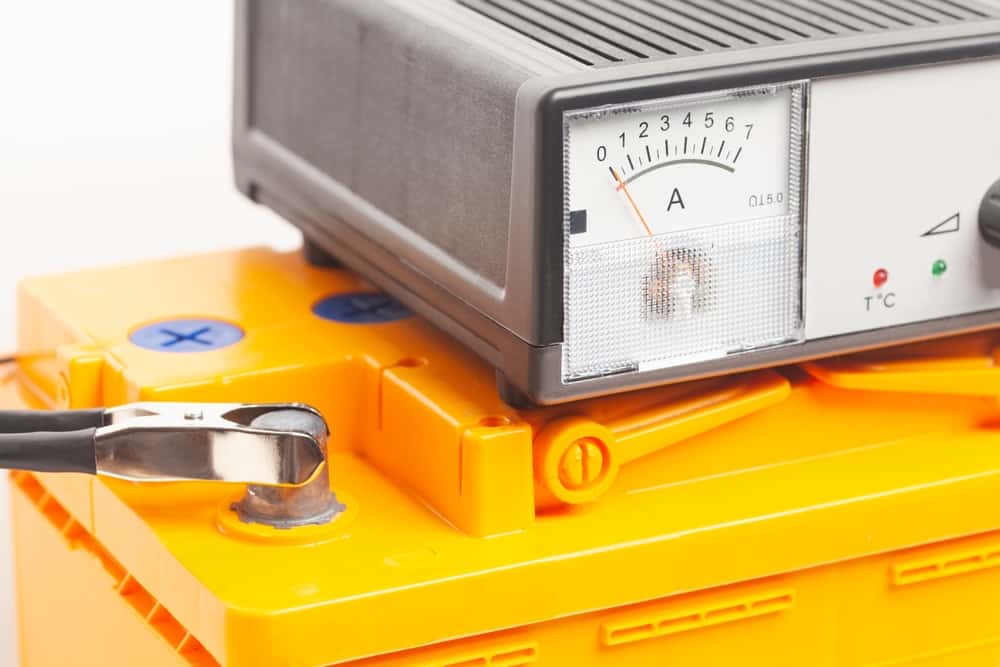Being stranded on the road because your car battery is dead can be frightening, especially if you are in the middle of nowhere. In situations like this, a portable car battery charger can come in handy. However, do you know how to use one?
To properly use a portable car battery charger to charge a car’s battery, remove the negative and positive battery cables from the charger terminals in that order and connect the positive charger clip to the battery’s positive terminal and the negative clip to a grounding point. Once you do this, set the charging rate and duration. Ensure, you do not move the charger and cables until charging is complete, then disconnect the wires and switch off the charger.
In this article, we’ll discuss how to use portable car battery chargers and why it is essential.
Table of Contents
How to Use a Portable Car Battery Charger?
The steps for recharging a car battery using a portable charger are very similar to those of using a plug-in charger. However, there are a few disparities but don’t fret, this device is pretty simple to operate. If you follow the proper steps, there won’t be any mistakes and the likelihood of destroying any electrical parts, causing an explosion, or getting electrocuted is minimal.
Before we get into the steps, here are the items you’d need:
- Car Battery
- Portable battery charger
- Protective Clothing such as Eye Protection Glasses
- Owner’s Manual
- Cleaning brush
- Baking soda
- water
Before Charging
Before you start, read the car’s manual to get information on the particular battery, its voltage, and the appropriate or specified charger you can use to recharge it.
Also, read the charger’s manual for its DC output voltage, how to use it, and what precautions you need to take. Reading both manuals will help you ensure the battery and charger match.
N.B: There might be a need for you to bring out the battery from the car to power it up. Most times, they are in easily accessible places but this depends on your car’s make and model.
Sometimes it may be under or in the fender, under the seat, or in the trunk. If your battery is in any of these places, you need extra tools or expert guidance to remove it.
Step 1: Ensure Personal Protection
Wear protective clothing, especially for the eyes. Remove any jewelry you have, including rings and watches. Switch off the car’s engine and remove the keys from the switch. Ensure all the car accessories are turned off, including the lights.
Step 2: Preparing the Battery and Charger
Starting from the negative end, remove the cables from the battery terminals. The negative cable is typically black and has either (-), N, or NEG as an identifier. The positive end is generally red and has either (+), P, or POS.
You may find some corrosion on the battery terminals caused by acid leakage and buildup. Wipe this off with an acid-cleaning brush and a mixture of baking soda and water.
Ensure the charger is switched off and not plugged into an electrical socket. Also, avoid putting the positive and negative leads together; if they touch, they can cause an explosion or fire.
Step 3: Connect the Charger

Connect the leads of the charger to the battery terminals, starting with the positive clip (red) to the positive battery terminal. Next, attach the negative clip (black) to a stationary metal component on the frame or engine block of your vehicle.
Ensure the grounding spot is far from the battery, the carburetor, and the fuel lines. Never use the intake manifold, engine rocker covers, or fuel lines as grounding points!
Step 4: Set the Charge Rate and Timer
You can either charge the battery slowly, that is, trickle charge, or quickly. Quick charging requires a higher charging voltage and current, while trickle charging requires lower settings. Charging slowly is always better, but you can confirm the charge settings from the manual.
Some batteries can automatically switch off and stop charging when the battery is fully charged to prevent overcharging. Some don’t have these features. Either way, set the charging time by selecting that option on the charger or setting a timer.
Leave the charger and cable in a spot while charging; don’t move them around.
After Charging
When the battery is fully charged or the set time has elapsed, turn off the charger and remove the leads, starting with the negative and then the positive.
Return the portable charger to its safe storage. Allow the car to rest for a little while, after which you can be on your merry way.
Key Takeaway
- Ensure the connections are made to the right places, i.e. red to red (positive) and black to a grounding point, and in the correct order. If not, you’d fry your electronics, cause an explosion, or even get electrocuted.
- There are different types of car battery chargers: charger, maintainer, and restorer for different purposes.
- Some chargers are handy, others heavy-duty. Some are automatic and work for all kinds of batteries, some aren’t. Ensure the charger matches your battery to avoid complications.
Benefits of Having a Portable Car Battery Charger

Generally speaking, if you take good care of your car, your battery won’t need to be recharged for at least five years. Still, having and knowing how to use a portable car battery charger is one of the essential things you need as a car owner. Here’s why you should have a portable car battery charger.
1. Emergencies
Car battery failure always occurs when you least expect it or in fire situations. Preparing ahead for such emergencies is good because you can never tell when you’d need one. Your car may run right now, but do you really want to wait until it won’t start before you take action?
2. Its Compact Size
Portable battery chargers come in sizes that are compact and lightweight enough to fit in glove boxes and toolboxes. Some weigh only a few pounds. Some require access to a power source like an ac outlet, and some don’t, thanks to new and improved technologies.
Thanks to its compact size and lightweight, you can easily carry it around without stress.
3. It Saves Resources
You can save time and money by using a portable battery charger to power up your dead battery. Some devices maintain the battery’s charge by continuously powering it without overcharging the battery.
Other devices such as restorers, help monitor your car battery’s condition. When a potential flaw is discovered like sulfation, the charger starts working to fix it. This helps the battery last longer, saving you money on expensive repairs and replacements.
4. It’s Safe and Effective
Modern portable charging units come with built-in security features that not only charge a dead battery but also restore older batteries. These safeguards make them more efficient and safe to use than most conventional automobile battery chargers. Charging with these portable units is safer, cost-effective, and more efficient.
Tips on Recharging Your Car Battery With a Portable Charger

- Never place your face too close to a battery. Always protect yourself.
- Ensure that nothing flammable, including anything on your hands, is near the vehicle.
- Remember to always read and follow the manuals for safety purposes.
- Recharge your portable car battery charger after each use for nothing less than three hours. Depending on how long you use them, some devices need 12 to 24 hours to fully charge.
- When not in use, recharge the device at least once every six months to maintain the charge.
- We advise that you power up your power storage packs when preparing for a long trip.
- Also, for safety’s sake, every driver must have a portable car battery charger handy in the car. However, having a plug-in charger at home to fully recharge is practical and affordable. If you only need one, a portable unit is enough.
FAQ
1. How Long is the Charging Time for a Portable Car Battery Charger?
It depends on the charger’s output, the battery’s voltage, and the number of cold-cranking amps. Take a car battery with 400=500 cold-cranking amps, for instance. A battery with less than 11.85 volts will charge faster, with a charger delivering a 10-amp rate (6 hours) than one with a 5-amp charge rate (12 hours).
2. How is a Portable Car Battery Charger Different from a Jump Starter?
The charger does not immediately produce enough amperage to crank the engine and start your car. This device slowly charges a battery over an extended period so that the battery can absorb the charge and maintain voltage and amperage over time.
Portable jump starters, on the other hand, don’t recharge your battery; instead, they offer the amperage required to turn the key and start the car immediately.
Final Thoughts
A portable battery charger ensures you always have a way to recharge your car battery if you need to, no matter where you are on your journey. If your battery ever dies during a trip, all you need to do is
- Ensure the charger is not plugged into any outlet.
- Read the manuals
- Attach the charger’s positive clip to the battery’s positive terminal and the negative clip to a grounding point.
- Set the charging rate and switch on the charger and set a timer.
- Once charging is complete, switch off the charger and disconnect the cables and you’re all set.
